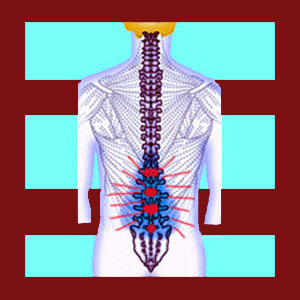
Knowledge therapy for facet joint pain is an alternative treatment option that uses psychoemotional practices to undermine the mindbody process causing symptoms. Knowledge therapy is a highly effective approach to care for patients who suffer primary or secondary gain pain syndromes that are created, worsened or perpetuated in the mind. Since the mind influences every state of health and disease, this basically describes virtually everyone who is suffering from chronic pain anywhere in the anatomy. Remember, the symptoms do not have to be psychogenic in order for knowledge therapy to have positive benefits. The therapy is also highly useful for patients who simply express the psychological overlay of their suffering and want to feel better without dangerous pharmaceutical or surgical methods of care.
This mindbody topic explores our extensive experience observing the use of knowledge therapy in facet joint syndrome patients. We will detail why the care program is effective, as well as why it might fail. Finally, we will provide additional background on the role of psychology and stress in the generation, intensification and extension of physical symptoms, like apophyseal joint pain.
Knowledge Therapy for Facet Joint Pain Defined
Knowledge therapy is the term coined by Dr. John Sarno to describe the care program developed for his TMS patients. Tension myositis syndrome is the name of the condition that Sarno began to diagnose decades ago, which describes chronic pain related to psychoemotional causation rather than the coincidental structural scapegoats previously blamed for its creation. Knowledge therapy now includes many types of non-physical treatments, including any of those originally used by Dr. Sarno in his work with TMS sufferers.
Knowledge therapy has been called the “non-treatment treatment”. This is because although it is a very proactive process, it denies treating the body completely, since the pain is theorized to be created by the mind. This is not to say that the pain is imaginary, exaggerated or part of some mental defect. Instead, the idea is that psychogenic pain was experienced completely in the body and was identical in every way to purely anatomically-motivated pain, with the exception of its root source. Dr. Sarno’s knowledge therapy sought to find this origin of pain and address it using purely psychological methods of care, since focus on the body was thought to be counterproductive.
Modern forms of knowledge therapy are still evolving at a rapid pace. There are now many doctors involved in creating their own practices geared towards relieving the symptoms of mindbody pain syndromes. Pain coaches have also played a huge role in the progression of the system to make it more effective and appealing for people who traditionally fell outside of its core concepts: namely patients who do have structural components to their pain and patients who suffer more from secondary gain than primary gain.
Knowledge Therapy for Facet Joint Pain Applications
Knowledge therapy is useful for everyone and should be a commonly applied form of life improvement for all human beings. Why wait for pain to ruin life, when a bit of education on the practices of knowledge therapy can actually prevent symptoms from occurring in the first place? This is a use that Sarno never discussed, but it seems obvious to most who work in the field of mindbody medicine.
Knowledge therapy can provide true and lasting cures for any type of psychogenic facet joint pain and can provide cures or great relief from psychosomatic-influenced pain syndromes. However, the teachings of knowledge therapy are useful for people who suffer structural pain, as well. In fact, as noted above, the teachings are extremely beneficial for healthy people who do not even have pain. Learning and integrating these teachings can actually prevent pain from taking charge of these people’s lives, a tragic occurrence which takes great effort and determination to undo.
We have recommended knowledge therapy to all of our chronic pain patients, including those with suspected mindbody pain, suspected anatomically-motivated pain and all who fall in between the 2 categories. Of course, the teachings must be adaptable for each individual scenario, but we find them to be absolutely customizable to fit each patient’s specific needs.
Knowledge Therapy for Facet Joint Pain Limitations
Mindbody therapies will usually be least useful for people who demonstrate true physical pathologies, although this is not always the case. We have witnessed obvious injury-driven pain being dramatically reduced by the implementation of knowledge therapy, and unfortunately have also seen obvious psychogenic syndromes fail to respond to the treatment, usually because of the patient’s determination to reject the idea of a psychoemotional causation at all costs. In essence, some patients benefit greatly when no benefit should be expected, while others would rather hold on to their pain than to acquiesce to the model of mindbody health.
Unlike Dr. Sarno, we do not find knowledge therapy to universally provide cures. However, we do objectively see its benefits for all and therefore continue to recommend it as a great path for chronic pain sufferers. Much in the manner that Dr. Sarno cautions patients to beware the untruths of traditional medicine, we recommend that patients who use knowledge therapy disregard some of the myths of the treatment and focus on how it can help them, even if a cure seems unrealistic. Since there are no risks of the program, we enthusiastically recommend it for its efficacy, especially when compared to the traditional ineffective and dangerous paths of surgery, injections and pharmaceutical poisoning. We have integrated the most effective knowledge therapy practices into our own proprietary and peer-acclaimed pain relief program: Cure Back Pain Forever.
Facet Joint Pain > Psychosomatic Facet Joint Pain > Knowledge Therapy for Facet Joint Pain





